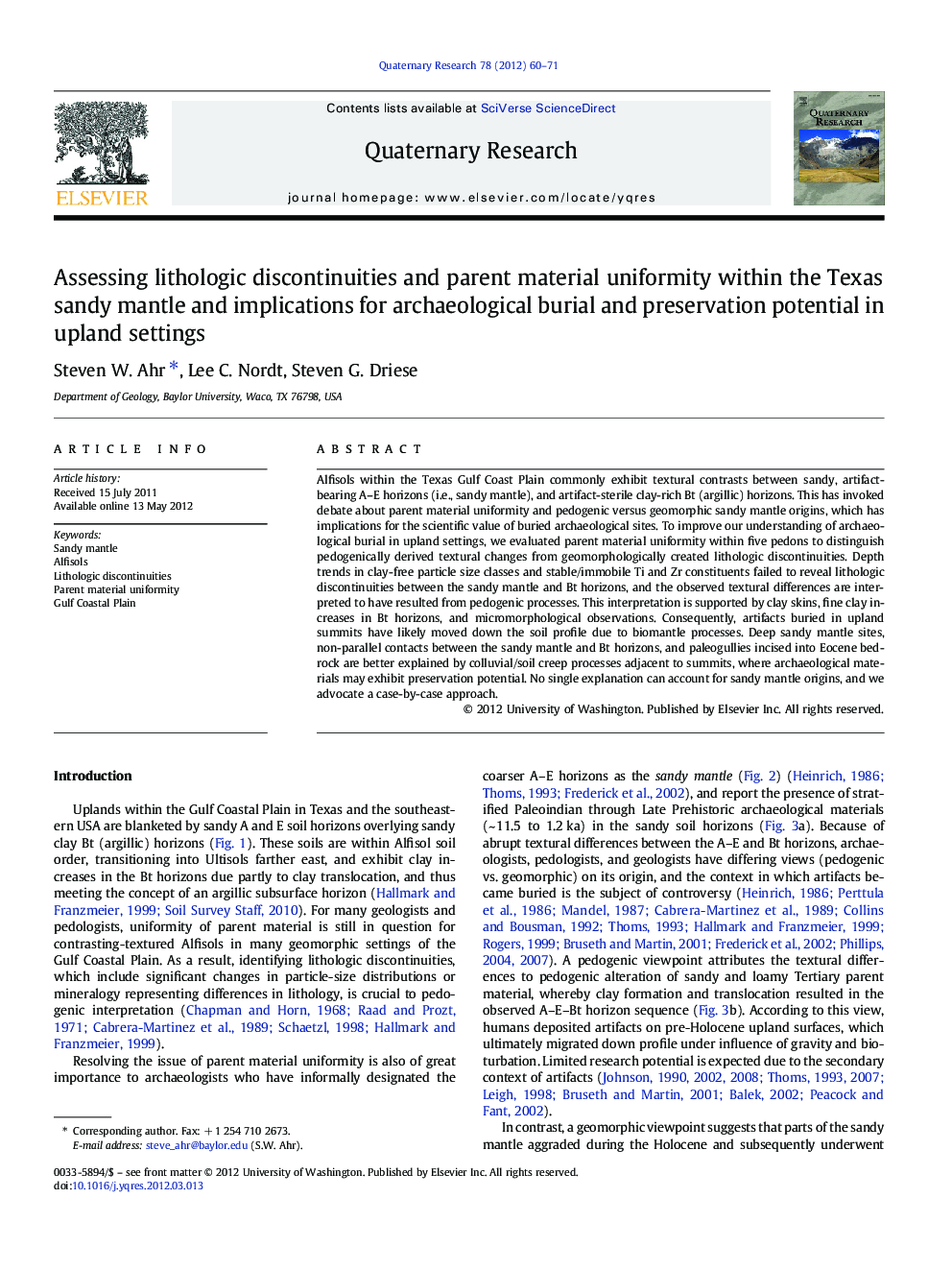| Article ID | Journal | Published Year | Pages | File Type |
|---|---|---|---|---|
| 1045573 | Quaternary Research | 2012 | 12 Pages |
Alfisols within the Texas Gulf Coast Plain commonly exhibit textural contrasts between sandy, artifact-bearing A–E horizons (i.e., sandy mantle), and artifact-sterile clay-rich Bt (argillic) horizons. This has invoked debate about parent material uniformity and pedogenic versus geomorphic sandy mantle origins, which has implications for the scientific value of buried archaeological sites. To improve our understanding of archaeological burial in upland settings, we evaluated parent material uniformity within five pedons to distinguish pedogenically derived textural changes from geomorphologically created lithologic discontinuities. Depth trends in clay-free particle size classes and stable/immobile Ti and Zr constituents failed to reveal lithologic discontinuities between the sandy mantle and Bt horizons, and the observed textural differences are interpreted to have resulted from pedogenic processes. This interpretation is supported by clay skins, fine clay increases in Bt horizons, and micromorphological observations. Consequently, artifacts buried in upland summits have likely moved down the soil profile due to biomantle processes. Deep sandy mantle sites, non-parallel contacts between the sandy mantle and Bt horizons, and paleogullies incised into Eocene bedrock are better explained by colluvial/soil creep processes adjacent to summits, where archaeological materials may exhibit preservation potential. No single explanation can account for sandy mantle origins, and we advocate a case-by-case approach.
